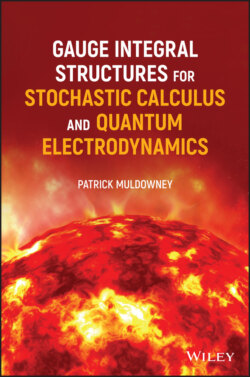Читать книгу Gauge Integral Structures for Stochastic Calculus and Quantum Electrodynamics - Patrick Muldowney - Страница 26
2.4 Choosing a Sample Space
ОглавлениеIt was mentioned earlier that there are many alternative ways of producing a sample space (along with the linked probability measure and family of measurable subsets of ). The set of numbers
was used as sample space for the random variability in the preceding example of stochastic integration. The measurable space was the family of all subsets of , and the example was illustrated by means of two distinct probability measures , one of which was based on Up and Down transitions being equally likely, where for the other measure an Up transition was twice as likely as a Down.
An alternative sample space for this example of random variability is
(2.13)
where for ; so the elements of consist of sixteen 4‐tuples of the form
Let the measurable space be the family of all subsets of ; so contains members, one of which (for example) is
with consisting of five individual four‐tuples. Assume that Up transitions and Down transitions are equally likely, and that they are independent events. Then, as before,
for each . For above,
To relate this probability structure to the shareholding example, let , and let
(2.14)
using Table 2.4; so, for instance,
and so on. Next, let denote the stochastic integrals of the preceding section, so for ,
so gives the values of Table 2.4. As described in Section 2.3, the rationale for deducing the probabilities of outcomes , , from the probabilities on is the relationship
For this calculation to work in general, the functions involved ( and ) must be measurable. But that is no problem in this case since all the sets involved are finite. To illustrate the calculation, take . Then, referring to Table 2.4 whenever necessary,
As a further illustration, suppose we now take
(2.15)
letting be the sigma‐algebra of Borel subsets of . For each define as follows. Suppose and . Taking , let be the set consisting of the 16 elements
and let be an atomic measure with if , and, for ,
(2.16)
for or ; with for all other . Thus, if Up and Down transitions are independent and equally likely, then and
(2.17)
As in previous versions of the sample space , this construction imposes probabilities on the outcomes or , by means of the relation
for measurable sets in the range of , since is clearly a measurable function on the domain . Thus, for outcomes or , and
